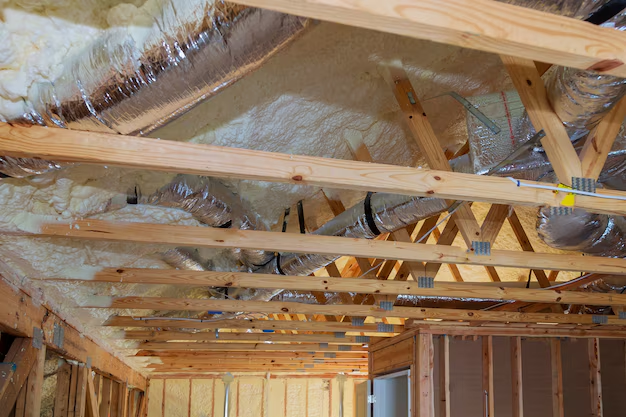Tips for Effectively Insulating Your Attic Roof Rafters
Insulating your attic is one of the most impactful DIY projects you can undertake for a more energy-efficient home. If you’re looking to keep your residence warmer in the winter and cooler during the sizzling summer months, insulating the roof rafters in your attic is a must. This guide will break down the attic insulation process into simple steps, allowing you to maintain a comfortable indoor environment while saving significantly on energy bills.
Understanding Your Insulation Options
When it comes to attic insulation, several options are available, each with its pros and cons:
- Fiberglass Batts: Easy to install and widely used, fiberglass batt insulation is affordable and effective for attics with standard spacing between rafters.
- Spray Foam: This option provides an air-tight seal and higher insulation value, although it often comes at a higher price, potentially requiring professional installation.
- Rigid Foam Boards: Ideal for adding insulation without significantly increasing the thickness of the roof surface, they are perfect for areas with space constraints.
Preparing Your Space
Before diving into the insulation process, it’s essential to prepare your attic space:
- Safety First: Ensure you have protective gear, including gloves, safety goggles, and a dust mask.
- Clear Out the Clutter: Remove any items stored in the attic to provide a clear workspace.
- Inspect for Damage: Check for any signs of leaks, mold, or structural deficiencies. Address these issues before installing any insulation.
Installing Insulation in Attic Roof Rafters
Step 1: Measure and Cut
Accurate measurement of your attic space is critical. Measure the distance between your rafters and decide on the necessary thickness of your insulation material.
Step 2: Secure Insulation
For fiberglass batts, fit them snugly between the attic rafters without compressing them, as this can reduce their effectiveness. For spray foam or foam boards, follow the manufacturer's instructions for proper application.
Step 3: Seal Gaps
Ensure there’s a vapor barrier to prevent moisture from penetrating the insulation. Caulk or tape over seams and gaps that could allow air leakage.
Step 4: Ensure Ventilation
Proper ventilation within your attic is crucial to prevent mold growth. Ensure that soffit vents or ridge vents are not blocked by the new insulation.
Optimize Energy Efficiency with Financial Support
While insulating your attic can offer a great return on investment through energy savings, it initially requires a budget that might be a strain for some homeowners. Fortunately, there are various financial assistance programs and incentives available:
- Weatherization Assistance Program (WAP): This government initiative aims to assist low-income families in improving their energy efficiency, which may include support for attic insulation.
- Local Energy Audits and Rebates: Many states offer energy audits and rebates for participants who upgrade their home insulation. Check with your local utility providers for details.
- Home Improvement Loans: Consider a specialized loan to finance your home improvement project with favorable terms aimed at boosting energy efficiency.
Financial Assistance Programs and Resources
Here is a straightforward rundown of some financial assistance options you may consider to further ease the process:
- 🏡 Weatherization Assistance Program (WAP): Benefit from comprehensive energy efficiency upgrades.
- 💲 State and Local Tax Credits: Receive credits for energy-efficient home improvements.
- 📝 Home Improvement Loans: Access affordable loans for insulation and other renovations.
- 🔎 Energy Efficiency Rebates: Explore utility company incentives to offset insulation costs.
- 🎓 Educational Grants for DIY Workshops: Participate in workshops to gain skills for self-conducted home projects.
By properly insulating your attic roof rafters and utilizing available financial support, you can transform your home into a more energy-efficient sanctuary that’s not only comfortable but also kind to your wallet.
